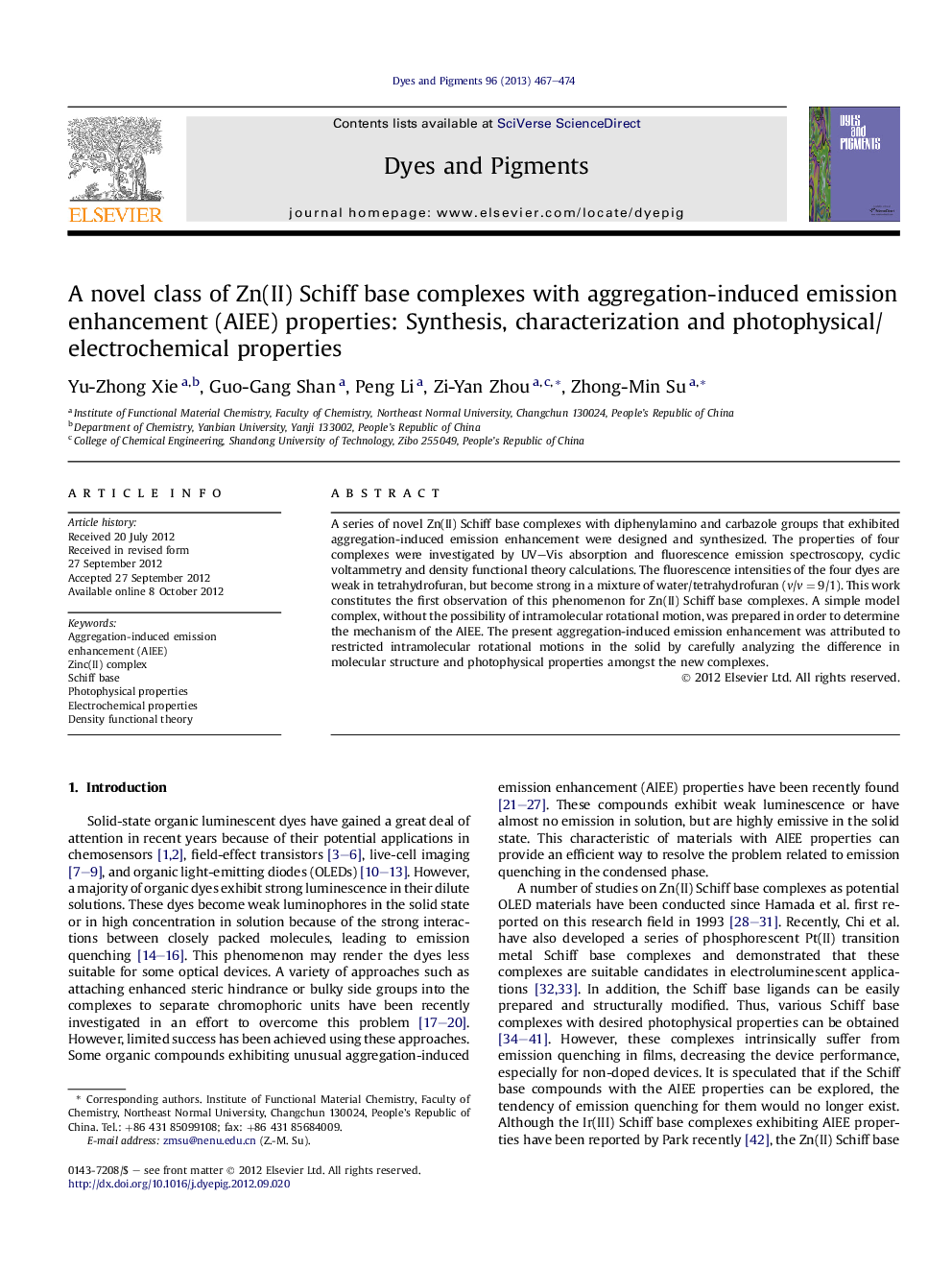| Article ID | Journal | Published Year | Pages | File Type |
|---|---|---|---|---|
| 176715 | Dyes and Pigments | 2013 | 8 Pages |
A series of novel Zn(II) Schiff base complexes with diphenylamino and carbazole groups that exhibited aggregation-induced emission enhancement were designed and synthesized. The properties of four complexes were investigated by UV–Vis absorption and fluorescence emission spectroscopy, cyclic voltammetry and density functional theory calculations. The fluorescence intensities of the four dyes are weak in tetrahydrofuran, but become strong in a mixture of water/tetrahydrofuran (v/v = 9/1). This work constitutes the first observation of this phenomenon for Zn(II) Schiff base complexes. A simple model complex, without the possibility of intramolecular rotational motion, was prepared in order to determine the mechanism of the AIEE. The present aggregation-induced emission enhancement was attributed to restricted intramolecular rotational motions in the solid by carefully analyzing the difference in molecular structure and photophysical properties amongst the new complexes.
Graphical abstractA series of Zn(II) Schiff base complexes with an intramolecular rotational motion group were prepared. An investigation of their photophysical properties showed that these complexes exhibited aggregation-induced emission enhancement (AIEE) properties.Figure optionsDownload full-size imageDownload as PowerPoint slideHighlights► A series of Zn(II) Schiff base complexes have been designed and synthesized. ► The complexes exhibit aggregation-induced emission enhancement property. ► The aggregation-induced emission enhancement phenomenon is related to restriction of intramolecular rotation. ► This is the first time aggregation-induced emission enhancement phenomenon has been observed for Zn(II) Schiff base complexes.
